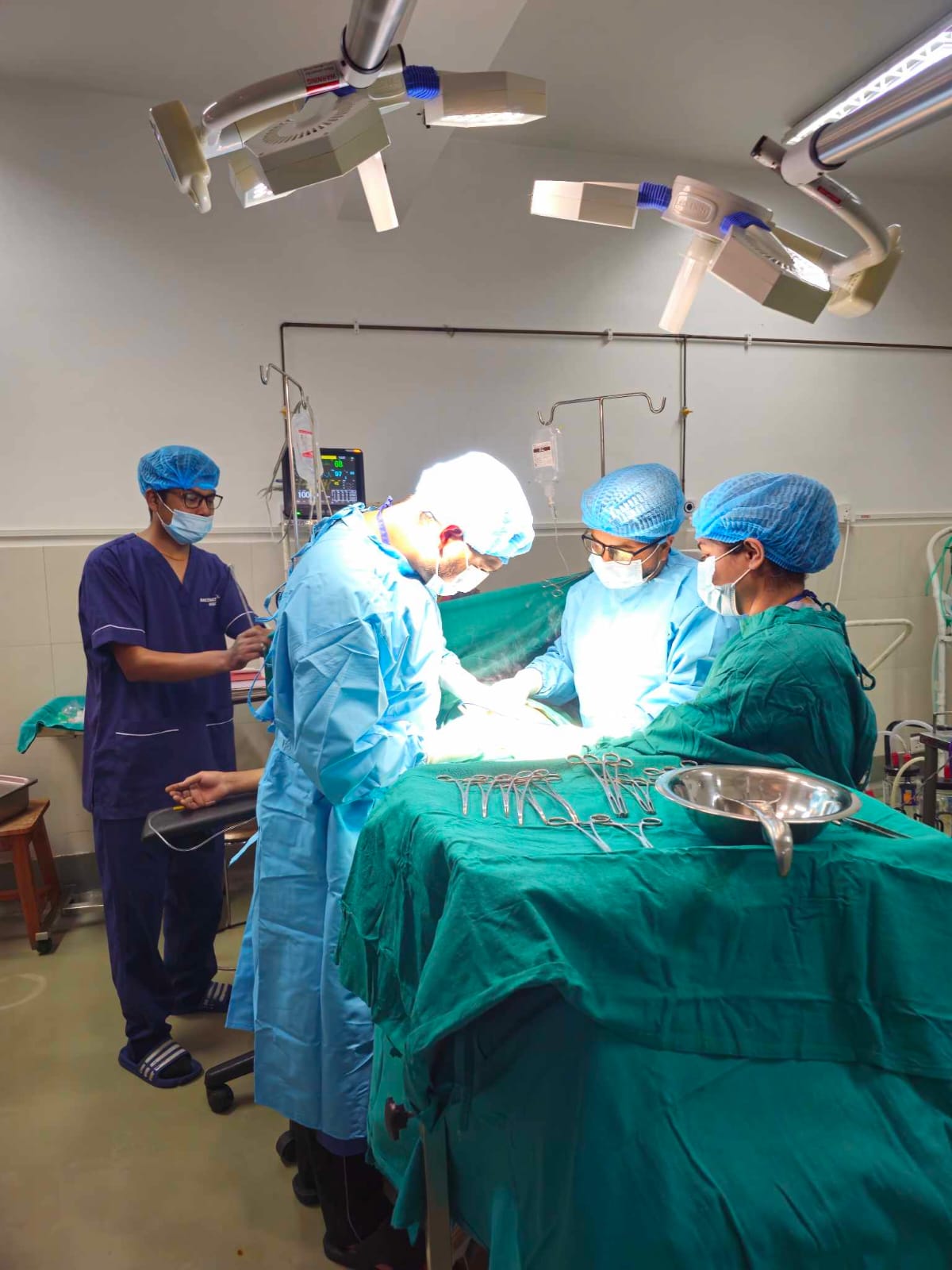Saving one mother at a time
Behind Nepal’s dramatic progress in reducing the maternal mortality ratio, there are heroic stories like thisIt was at 2:45AM in the morning, I was in a deep sleep when I got a call from the hospital. The nurse on duty said there was a woman in labour who had had two previous C-sections.
Half-asleep, I realised our resident gynaecologist was away on training and immediately rushed to the ward.
The patient was 39-year-old Nim Diki Sherpa, wincing in pain and fully dilated. She had not had a single ante-natal checkup, and said she did not even know she was pregnant because she had taken a depo contraceptive injection.
Her husband was away and she was brought to Bhojpur District Hospital by neighbours who also had no idea she was pregnant.
As resident medical officer with only an advanced skilled assistant birth attendant (ASBA), I was clueless about what to do next. Because of her two previous C-sections, this could be a complicated case needing referral.
But our referral centre was too far away for this emergency. With our medical superintendent, we gathered at the operation theatre for surgery and took the patient’s consent. Pre-anaesthetic check-up and preloading were done and the patient wheeled in.
Blood grouping and crossmatch was done, and two hospital staff donated their own blood since the blood bank did not have stock. Because the patient was writhing in pain, the spinal anesthesia was administered with some difficulty.

I was the main surgeon with another birth attendant, an experienced nurse and anaesthesia assistant. An incision was made near the C-section scars, but as we entered the abdominal cavity there was a sudden gush of blood. We could not figure out where it was coming from.
After separating the muscle, I could see that it was as we had feared: a uterine rupture. We made a T-shaped incision to deliver the baby which was drowning in blood.
The anaesthesia assistant, medical superintendent and nurse started resuscitating the baby, and I waited for it to cry while trying to deal with the mother’s bleeding. I felt I had lost one life, and could not save the other.
We took the uterus out from the incision, traced the source of the bleeding, and started clamping with all the instruments we had.
I had seen one case of peripartum hysterectomy during my training, and knew that a case like this was touch and go. Remembering tips from the training, I asked for long artery forceps. It was not in the set, but the nurse tracked one down in the store, disinfected it with betadine and handed it to me.
There was no time to autoclave it, and I remembered my trainer telling me that we should all adapt to the situation at hand (अवस्था अनुसारको ब्यबस्था). His advice rang loudly in my ear. There was little hope, but I tried to keep calm and started suturing layers of incisions.
All the while the anaesthesia assistant managed to keep everything under control. There was massive bleeding and we transfused two-pints of whole blood. I remembered what the mother had said before she was anaesthetised: “Doctor, do everything to save my life.”

After three continuous hours at surgery, dawn was breaking as the mother’s bleeding started to come under control and her blood pressure started rising. But we still had a long way to go. The medical superintendent had arranged for helicopter medevac and she was airlifted out soon after.
With me in the surgery team that night were fellow doctors Praveen Mandal and Shivaji Rijal, anaesthesia assistant Durga Nanda Chaudhary and nurses Sumitra Shiwa and Basanta Moktan. Advanced skilled birth attendant (ASBA) is a 70-day training given to MBBS doctors by the National Health Training Center and Nick Simons Institute (NSI) with clinical exposure in obstetrics after which they are expected to manage complicated deliveries in rural government hospitals with cesarean section independently.
Nepal has dramatically reduced maternal mortality ratio from 536 per 100,000 live births thirty years ago to 145 now – mainly because of antenatal checkups, institutional deliveries and an increased number of advanced skilled birth attendants.
Over the past three decades, the lives of countless Nepali mothers have been saved. Like Nim Diki Sherpa, mothers have been saved one at a time by dedicated doctors and nurses working with limited resources and equipment.
Read also: Nepal lagging in safe motherhood, Sudiksha Tuladhar
There were many lessons we learnt that day. I learned what it is to take a leadership role in a life-or-death situation.
Back at Paropakar Maternity Hospital training in Kathmandu a senior consultant gynecologist once told me to scrub when a patient is bleeding profusely. He knew that one day I would be alone trying to save a life.
“There is no running away,” he had said. “There is no excuse, you either try or let a patient die.”
Once trained, circumstances will not let you choose. You cannot say ‘I wasn’t trained for this’, you have to adapt to the situation at hand with whatever you have.




